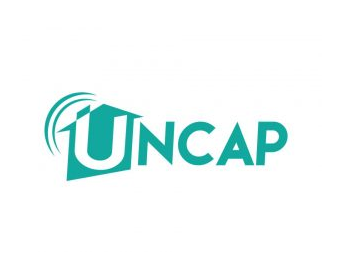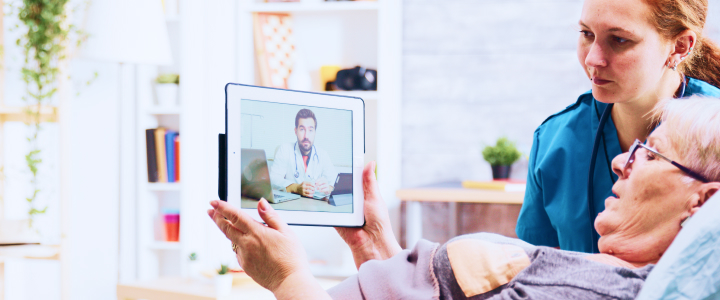Business Overview
The UNCAP (“Ubiquitous iNteroperable Care for Ageing People “) project was funded by the H2020 program and received a total sum of 3.000.000 €, involving 23 partners (including several pilot user partners) from 9 European countries (IT, UK, SI, RO, EL, DE, SE, ES, MK). Out of the 23 consortium partners, the company NIVELY has emerged to continue offering the outcome product. UNCAP delivers a complete system including software, hardware and a cloud-service. It contains the UNCAP Box, UNCAP App, UNCAP Cloud. The company NIVELY was identified and selected to operate UNCAP as a separate business line, commercializing UNCAP project results and licensing the needed technologies from the selected UNCAP consortium members.
The value proposition of UNCAP lies in the development of an open, scalable and privacy-savvy ICT infrastructure making use of solutions and technologies developed in previous projects to help aging people live independently while maintaining and improving their lifestyle. The final solution consists of real products that will be made available on the market.
Show more
The services which are offered by UNCAP to the end users and are directly related to the value proposition are the UNCAP Access Electronic Health Record (EHR) and Elderly Monitoring including fall detection and fall prevention, motion detection, device localization, red button activation, dispatching of notifications and interaction with the environment. To take the products and services of the platform to the domestic market the pilot user partners took into account the feasibility for a startup as possible.
Important stakeholders are the Healthcare services providers and care professionals, SMEs (CIO, CTO of companies, with infrastructure capacity, responsible for planning, infrastructure, sales, communication), distributors, hospices and private doctors, nursing homes, municipalities and governmental entities, companies doing home care services, end users and relatives. One of the most important key stakeholders are the relatives, caregivers and persons in care, which belong to the caregiver group and user group respectively. These are the individuals that purchase and/or use the UNCAP products and services, thus playing a major role. Pharmacies and small and medium sized enterprises make up another core group of the key stakeholders, since they provide, and use UNCAP products as well.
Since eCare services are more and more co-financed by care insurances technologies in the field, they are difficult to afford if customers are on their own. To tackle this challenge, the project consortium took under consideration the implementation of a flat rate model. This would allow customers or care institutions for example to use a leasing model, where fixed payments are paid each month. Another possibility being elaborated on is to rent the services provided by the platform which is considered to be a bit more flexible since the payments can vary depending on e.g. whether the service was used or not. Leasing is another option to generate revenue and fits specifically well the business segment, since tax advantages can be utilized, and the general monthly fee would most likely be lower compared to renting. On the other hand renting eCare products and services over the platform would particularly well fit the customers, due to the possibility of terminating the rent agreement at short notice.
Show less
Technical Overview
In the Physical layer the UNCAP certification suite can be connected to multiple devices such as blood pressure monitor, heart rate monitor, oximeter, scale, glucometer through drivers. This driver creates the link of the device to the UNCAP BOX. Drivers have to be written/created if a device does not support the already existing drivers. The project UNCAP has already developed a few drivers for some key communication protocols.
In the Service layer all services are modularized and interoperable, accessible through REST API. A data broker and a storage module offer intermediary services. The Data Broker collects the data published by multiple devices (medical devices, non-medical devices, etc.) and applications. It also collects and dispatches different types of data, such as timeseries data and asynchronous events.
Show more
The storage is the lower layer where data will be stored and from where all modules can gather information to be processed. This level is responsible for managing all data uploaded to the cloud from the various users/applications and should guarantee accessibility to those when needed.
In terms of the Application layer UNCAP offers viewing the data, different dashboards for carers, medical professionals, elderly adults. It also offers functionality of reminders, alerts and emergency alerts. Location based geofencing is implemented as well as indoor and outdoor localization and navigation. Billing, user management, authentication, communication configuration functionality is also offered. More specifically exergames are offered as well as a bio-signal tracking module.
UNCAP does not have a Semantic layer, it uses semantic annotation to describe the services it offers.
In terms of device management, devices can be added and discovered. They can only be used as data sources. Basic protocols, for which drivers are already developed are KNX and Bluetooth Low Energy (BLE). The system is connected to hospitals through FHIR HL7 v2,3.
Security measures have been thought of, but no further details are mentioned on how this is achieved. Due to the distributed nature of the system on mobile devices, home servers, clouds it is especially important. Authentication and authorization are achieved by managing permissions and user groups.
UNCAP offers data representation in real-time and of historic data. It also offers rule creation functionality. Besides data representation, different dashboards for carers, medical professionals and older adults are readily available.
Show less
Contextual Overview
UNCAP certification suite was developed in the project UNCAP, co-financed by the EU through Horizon 2020.
The UNCAP (“Ubiquitous iNteroperable Care for Ageing People “) project was co-financed by the Horizon 2020 programme, involving 23 partners (including several pilot user partners) from 9 European countries (IT, UK, SI, RO, EL, DE, SE, ES, MK), between 2016-2018.
UNCAP made use of solutions and technologies developed in previous research projects to develop an open, scalable and privacy-savvy ICT infrastructure designed to help aging people live independently, while maintaining and improving their lifestyle. The final solution consist of real products that will be made available on the market.
UNCAP currently delivers a platform based on open industrial standards, able to create new care & assistance paradigms, through an open source, scalable and privacy-savvy ecosystem ready to help aging people live independently
Show more
Being based in Italy and France, UNCAP is compliant to European regulations. Based on the devices UNCAP connects to and the services offered, it stores data of different nature such as: sensor data, medical devices, scores, metrics, schedules, personal health information, login, policies, operational, atl@ante and location.
UNCAP is categorized as open specification and open software components, with parts which are licenced from project partners. UNCAP BOX, the UNCAP CLOUD and the UNCAP APP are released as open source. However, elements of the so called UNCAP core system as well as enabling technologies provided by different technology partners are so called background IP, thus constituting pre-emptive rights, which use and application has to be licensed.
Show less
Scenarios
Low-tech informal care (private home) scenario
Joe is 75 years old, he lives alone and he is still autonomous. However, he has been subjected to some episodes of memory loss and disorientation, and he is currently being monitored by his doctor and by the staff in the nearest elderly care facility. His son lives in a village far from is house. The doctor has prescribed a medicine and has defined activated a program of activities that Joe is able to perform by himself, at his own place, in order that are used by the doctor to monitor the patient’s condition and to implement some simple measures to exercise memory and attention.
Joe’s son has installed at home the UNCAP “starter kit” at Joe’s house. This includes an UNCAP BOX (an HDMI Dongle) to be connected to the TV (which represents for him a familiar interface), together with an IP camera for video conferencing, plus a one-year subscription to the UNCAP CLOUD service (this may is be provided as part of public care service).
The TV is always in standby, and it turns on when it is time to take medicines, or to start remote sessions with Joe’s doctor to perform his periodic evaluation tests. Joe’s son has also installed a compatible smart sensors kit, which communicates with the UNCAP BOX via standard protocols (e.g. SWE or SensorThings by OGC). In fact, after discussing with Joe and his son, the doctor had suggested to buy an activity-sensing bracelet, which Joe always wears. They have also bought a localisation kit which is attached to several objects (medicine box, TV remote control, home keys etc.) to help Joe locate them.
Show more
All the equipment had come with easy to use instructions and was had been easily installed and connected to the BOX by Joe’s son, without help from any technicians. The only thing Joe’s son had to do was to simply scan with his mobile phone a QR-code on each of the sensor and follow few simple instructions on the screen. The UNCAP BOX automatically downloaded the required plugins from the UNCAP cloud service, which allowed –from that moment on- interoperable (hence regardless of the manufacturer) access to sensor data (via SmartThings/SWE open standard). In this way sensors can connect -through the UNCAP BOX acting as home gateway- to the UNCAP cloud platform, where Joe’s medical records are stored (as HL7 standard) and made available to the medical team.
When it is time to take the medicines, UNCAP turns on the TV screen and produces an audio-visual reminder. Then, an audio message suggests Joe where his medicines are located. The sensors on Joe’s wrist and on the medicine box are used to understand if Joe has taken the medicine. After that, UNCAP asks Joe to place the medicine back in the right place, or in different places (this way the next time, UNCAP may ask Joe if he remembers the last place where the medicine box was left, in order to train his memory) .
The UNCAP BOX will also produce alarms in case the sensor on Joe’s wrist remains still for many hours during the day. The alarm can be seen by Joe’s doctor and son, which can therefore call Joe to assess his conditions. If Joe is out for a walk, the sensor (through an embedded GPS receiver) monitors his position and communicates it to UNCAP via a wireless network. If Joe’s is out for too long, maybe Joe is living an episode of disorientation; the interface will then alarm Joe’s son. At any moment, Joe’s son can monitor his father’s conditions and ask questions using UNCAP.
Learn more about UNCAP scenarios
Show less
Moving from specialised care facilities to home
Mary is 70 years old. Due to an accident, she has a temporary physical disability. After surgery she can stay for a week at Villa Rosa in Trentino (a pilot site of UNCAP), a public care facility designed to help patients experiment with different technologies and identify the most suitable ones to use once back home.
UNCAP BOXes are installed at the Villa Rosa facility to assess appropriateness of each technology to each specific patient. Wearable sensors are used to assess Mary’s level of fatigue and stress and localization can be achieved by using wireless and unobtrusive devices. This is used to assess the patient’s acceptability and the cost/utility ratio.
The local public health agency runs a UNCAP CLOUD service on their servers to which all the devices within the public health system (including the one installed at AUSILIA Villa Rosa) can connect.
After a week she identifies the most suitable aid and moves home where Mary’s daughter will proceed with the installation of an UNCAP BOX.
A social operator, Jane, helps Mary with the cleaning and cooking during the lunch breaks, while her daughter is with her on weekends. Mary should perform some daily exercises in order to train the muscles and articulations of her ankle, and she should try to move as much as possible to accelerate the rehabilitation process.
Show more
Mary’s daughter installs the UNCAP BOX on Mary’s TV at home. In addition, a small position sensor (with embedded accelerator) is attached to Mary’s slippers and shoes, which have been considered by Mary the best place (as non invasive and aesthetically acceptable). This allows monitoring Mary’s mobility, automatically compiling evaluation tests, like the Tinetti mobility test.
UNCAP interacts with Mary, reminding her when it is time to train, or guiding her and monitoring her performances during the exercises. Besides, the sensors can produce an alarm when indicating an abrupt deceleration followed by a prolonged stillness, indicating that Mary could be fallen and not able to get up. Mary’s daughter and Jane communicate through the UNCAP App installed on their smartphones which visualizes also Mary’s profile and health details. Mary’s daughter can receive an overall description of the events related to Jane’s visits and Mary’s conditions.
Furthermore, Jane can use UNCAP to warn Mary of particular problems; for example she can write a shopping list of items missing from Mary’s house, or she can advise a phone call, if she observes a sign of depression.
Once a week Mary’s doctor comes to visit her; he is constantly updated by the UNCAP about every important event or observation regarding Mary’s conditions. After verifying the patient’s status, he updates the clinical folder and the care project, changing the required mobility exercises if necessary. At weekends, UNCAP reminds Mary’s daughter to perform simple tasks with her mum, e.g. small walks, according to the care project indicated by Mary’s doctor.
Learn more about UNCAP scenarios
Show less
Pilot Sites
Pilot in Pergine (Italy)
Location: Hospital Villa Rosa in Pergine, Italy Type: Instrumented apartments
Villa Rosa is a state of the art facility managed by APSS, whose paradigm is the reproduction of daily life in instrumented apartment to assess the needs and related solution for each single patient. The goal of the pilot was to monitor patients to help them identify the right level of technology to be provided. Patients spent one week in the apartment to experiment aid technologies for ensuring their suitability and utility. The UNCAP BOX was tested to assess the appropriateness in correspondence of specific patient. Patient and environment were monitored to measure the level of use of different technologies, the fatigue and stress that their use cause to the patient, the patient’s acceptability and the cost/utility ratio.
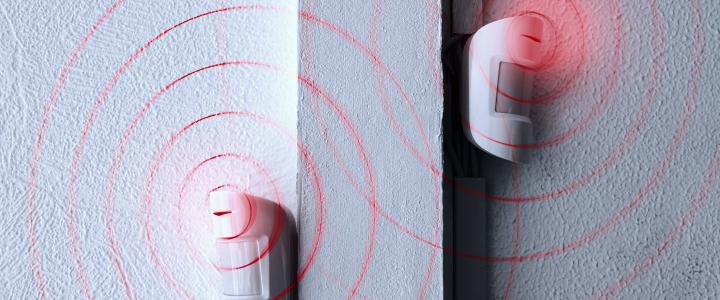
Pilot at Höhenkirchen-S. (Germany)
Location: Wohnen am Schlossanger, Höhenkirchen-Siegertsbrunn Type: Nursery home apartments
A large-area SensFloor system was installed in 10 patient rooms including the bathroom. SensFloor provided signals when someone was going out of bed and moving around in the room or bathroom. UNCAP was also used to turn on orientation lights to avoid stumbling in the dark. Events were notified by UNCAP to nurses when the system identifies that the patient needs help. If a patient fells and lays on the floor a fall alarm was triggered. Another 10 rooms were equipped with a SensFloor mat before each bed. UNCAP would turn on orientation light and send alarm to the nurse to indicate that the patient is leaving the bed and possibly in need of help. The efficiency of both systems would be compared rooms without such equipment.
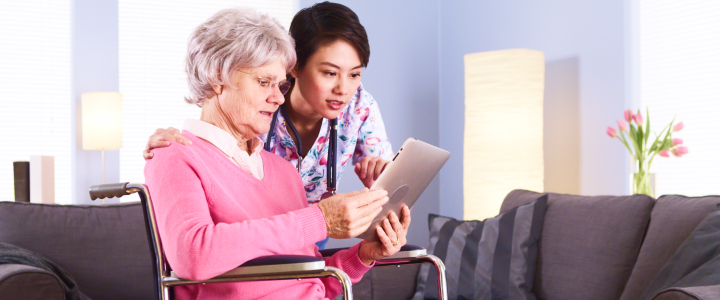
Pilot in Baia Sprie (Romania)
Location: Elder Nursing Homes in Baia Sprie Type: Elder nursing home
Baia Sprie Elder Nursing Home is a public facility aiming at providing care for 69 elders, some of which with cognitive problems. The nursing home introducing new technologies aiming at improving quality of life of patients. The UNCAP BOX and App will be tested for elders living in the nursing home and elders living at home, helping them carry out their current activities. Patient and environment will be monitored to identify the ways the technology affects their everyday life, both in nursing homes and for patients living at home.
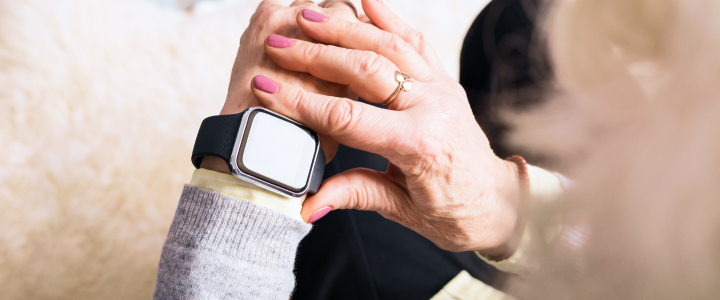
Pilot at Athens (Greece)
Location: Bioclinic Athens, Greece Type: Patients’ residences
The pilot is supported by Bioclinic Athens which is a large private hospital unit in Athens premises. The participants of the pilot typically suffer from COPD and/or diabetes; they are aged 65+ years old and with limited mobility due to amputations. They were provided with blood glucose and/or blood oxygen sensors, a smartwatch and a tablet. For each user, a specialized doctor would define a timeline of measurements that need to be taken daily and the respective thresholds. The medical team would be alarmed by UNCAP whenever a threshold violation was detected and would also receive an aggregated report to evaluate the patient’s condition. Falls would be automatically detected via a smartwatch.


